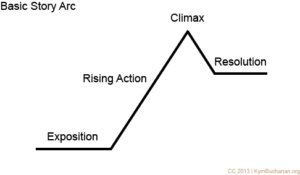Planning to Write
Welcome to this week’s ‘Writerly Witterings’ which is on the theme of Planning to Write. Each Monday, I will update my blog with a post that deals with an aspect of writing.
I am proud to be part of the writing community, I learn so much from other writers, and it is a pleasure to be able to offer something regular in return. Whatever stage you’re at in your writing and whatever you’re working on, be it a novel, short story, poem or memoir, I hope you can take something useful from this blog post.
I will follow it up next Saturday with what will be my third Facebook Live. Thanks to you if you joined me last week – it would be lovely if you were to connect with my Facebook page where you can join me next Saturday or watch the last two ‘replays.’
Are you a ‘Plotter’ or a ‘Pantser?’
There are two types of writer, or maybe three!
Firstly the Plotter (that’s me!) Someone who plots what they are going to write in lots of detail before starting.
Secondly the Pantser. A term that means ‘flying by the seat of their pants.’ Basically a writer that sets off with little idea of how their story will unfold.
Then, there will be many writers who fall in the middle of these two extremes.
Advantages of Being a ‘Plotter’
- You will probably know your characters and your initial setting in good detail before you start.
- If you know where you are heading, you are more likely to get there and not get stalled along the way.
- If you know the route you’re going by, you’re less likely to get lost. That said, deviation from the plan is always a writer’s perogative.
- You may find it easier to get started at each writing session.
Advantages of Being a ‘Pantser’
- It is very exciting to set off as a writer with no idea where your ideas and imagination will take you.
- You can let your characters lead the way and they often have a habit of doing unexpected and interesting things whilst they are doing so.
- There is less ‘constraint’ on a writer who doesn’t have anything they feel they should ‘adhere’ to.
Because many writers will be a bit of both, I offer lots of planning strategies within my writing courses, which writers can try and use, or take and leave. Here are a few:
Brainstorming/freewriting what might be included:
This is good for getting initial thoughts onto the page, before we lose them. We may think we will remember ideas, phrases and imagery but the likelihood is that we won’t. It is a strategy if we are feeling stalled before a scene or a chapter. It can allow inspiration to flow.
Getting to know a character in depth:
The better we know our characters and what makes them tick, the more we can bring a multi-dimensional character who our reader will identify with. We should be able to visualise them, hear their voice and know many of their hopes and fears.
Bringing a setting to life before it’s brought to the page:
Readers should be able to immerse themselves in the settings we create and gain a sense of atmosphere through not only being able to see and hear, but also to smell, feel and taste. This enables them to be part of the unfolding action.
Using the story arc approach:
Most stories follow a ‘story arc’ structure. (introduction- - -rising action- - -climax- - -resolution) with all the peaks, troughs and sub-plots along the way.
Plotting this route before you begin can be helpful.
Bullet pointing:
Bullet pointing an outline, using one or two words or a phrase can help us know the order in which we are going. I often do this when leaving the writing of my novel part way through so I can easily return to it the following day, knowing what I was going to write next.
Anybody wanting a blank story arc, to do a bit of plotting, can drop me a line and I will return a copy by email.
What strategies do you use to plan? Are you a plotter or a pantser? Share your experiences in the comments below or join me at 5.00 pm on Saturday where we can discuss further on Facebook Live.
Have a great writing week and thanks for reading!
©Maria Stephenson 20.1.2019
1 thought on “Planning to Write”
Comments are closed.